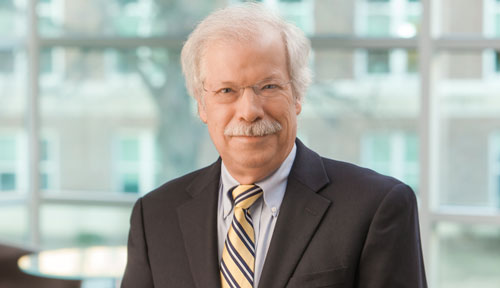In light of this week’s news that actress Angelina Jolie elected to have a double mastectomy, Edibaldo Silva, M.D., Ph.D., professor, surgical oncology, offered his insights on the subject:
“Take 100 women with breast cancer. Of those, 95 developed the cancer because of bad luck — only five had bad genes.
“In women who have one breast cancer and carry the BRCA gene, the risk of developing a cancer in the opposite breast approaches 50 percent. However, for the 95 percent of women who are not gene carriers, this risk is less than 5 percent. This small risk is cut in half by the use of the chemotherapy or hormone blockers used to treat their initial cancer.
“Thus, there is no benefit to removing the opposite breast in women without the BRCA gene.
“Amazingly, in the U.S. only 29 percent of women who choose a double mastectomy are ever tested for the genetic mutation.
“Most women who have their breasts removed without genetic testing do not realize that the most common cause of death in BRCA gene carriers is ovarian cancer, seen in 25 to 40 percent of these women. Thus, they have their breast removed only to develop ovarian cancer if they were in fact gene carriers, which is very rare.
“It is our hope that, since Ms. Jolie had adequate genetic counseling and testing to determine that she is a BRCA gene carrier and then chose the right preventive surgical prophylaxis, other women will be tested before they make that decision since only 5 percent will be found to carry the gene and need a double mastectomy.
“A lumpectomy with radiation therapy and chemo or hormone therapy remains the standard of care for early stage breast cancer since the consensus report by the National Institutes of Health in 1991.
“Ms. Jolie had a staged nipple skin sparing mastectomy, a cosmetically superior alternative to the typical mastectomy and which an experienced team of plastic surgeons and surgical oncologists has been performing at UNMC for more than four years. With this approach the patient has no appreciable scars and a perfectly normal appearance with an intact nipple and areola. In the preventive setting this approach is superior to a traditional mastectomy which leaves the patient with unsightly scars.
“Most women who choose a double mastectomy do so out of fear, without genetic counseling and are unaware of best practice patterns.”

I heard years ago at a genetics conference that the skin and nipple sparing procedure removes 95% of the breast and none of the risk. Not so?
My family went through the whole BRCA gene thing when my sister was diagnosed with breast cancer ten years ago. We declined testing and counseling, my sister stuck with standard of care, and ten years later we are all still cancer-free. With the highly publicized decision of Ms. Jolie, it is comforting to see some words of balance from Dr. Silva.
Dr. Silva replies:
Dear Dr. Anderson:
I am delighted to hear your comments. Please refer to the ample data file I am providing that corrects that misconception. (Editor’s note: The data file can be accessed by clicking on the “Dr. Silva’s power point” link in the story.) Think about what would be the recurrence rate in all women w/ breast conserving surgery in which the nipple is always left in place. The local recurrence rate for breast conserving surgery (BCS) is at present less than 4-5 % and is equivalent to that of mastectomy thus removing the nipple or not has NO bearing on local recurrence or survival in either operation. Furthermore, nipple recurrences after BCS are nearly never seen. Nipple recurrences after nipple skin sparing mastectomy (NSSM) is rarely seen and when it is seen it is never the case after prophylactic surgery like Ms. Jolie. If you refer to slide #17 you will see that nipple recurrence after NSSM in well selected patients is less than chest wall recurrence after any mastectomy (<3-5%).
Edibaldo Silva, MD, PhD, FACS
Professor
Division of Surgical Oncology
Department of Surgery
UNMC